Some dogs chase. Some cats claw. And some households? Total chaos.
But believe it or not, harmony is possible. You really can have a pup and a kitty who nap nose-to-tail on the couch like furry soulmates.
It’s not magic. It’s training. The right kind of training.
These aren’t boring obedience drills—they’re clever tricks that teach trust, build respect, and set up both animals for peaceful (and adorable) coexistence. Whether you’ve got a high-strung herder or a diva tabby, there’s hope.
Ready to swap the hissing and barking for cuddles and purrs? These 11 training tips might just turn your living room into a snuggle zone.
Create a Safe Space

Establishing a safe environment for both pets is crucial. Start by designating specific areas in your home where each pet can retreat.
This can help them feel secure, reducing stress and promoting a sense of peace. Use barriers like baby gates to allow them to observe each other safely.
Introduce familiar scents by swapping their bedding occasionally. Over time, this exchange can help them associate each other’s scent with comfort.
Search for cozy pet corners online to gather creative ideas.
Scent Swapping

Animals communicate through scent, making scent swapping an effective introduction technique. Begin by gently rubbing a cloth on one pet and placing it near the other.
This allows them to familiarize themselves with each other’s scent in a non-threatening way. Gradually, swap their bedding or favorite toys.
This process helps them become more comfortable with each other’s presence. Remember, patience is key, and allowing them to explore at their own pace can lead to successful interactions.
Supervised Meetings

Supervised meetings are essential for building trust. Start with short meet-and-greet sessions, ensuring both pets are relaxed.
Keep initial interactions brief and positive, rewarding calm behavior with treats or praise. Gradually increase the duration as they become more comfortable.
Always stay vigilant, observing their body language to prevent any aggressive tendencies.
Ensure the atmosphere remains calm to foster a harmonious relationship.
Positive Reinforcement
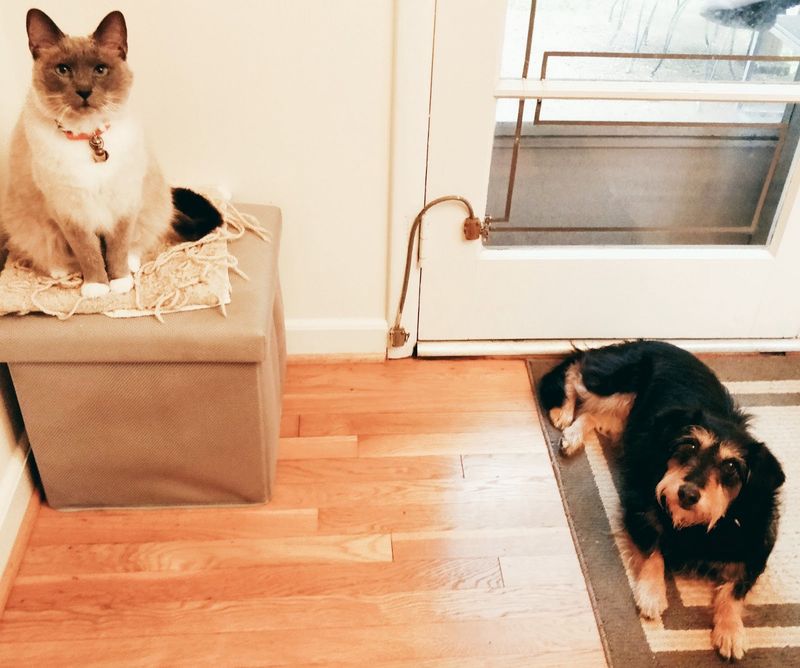
Positive reinforcement is a powerful tool in training pets. Reward desirable behavior with treats, affection, or playtime.
For instance, when the dog remains calm as the cat enters the room, reward both pets. This encourages them to associate positive experiences with each other’s presence.
Use high-value rewards to keep their interest. Consistency is crucial, and over time, this method fosters a cooperative environment.
Search for tips on positive reinforcement for pet training.
Desensitization Technique
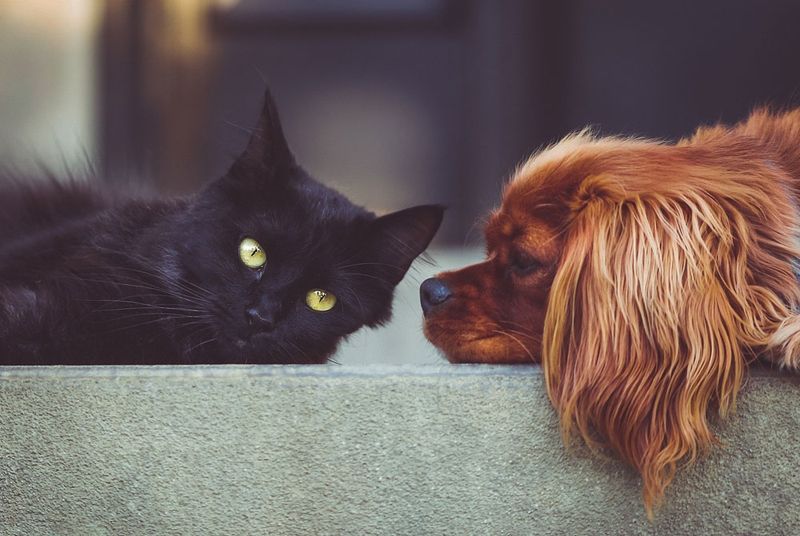
Desensitization helps reduce fear and anxiety. Begin by keeping interactions brief and gradually increase exposure time.
Start at a distance where both pets feel comfortable and gradually decrease the space. Monitor their reactions, ensuring they remain relaxed.
This technique builds tolerance and reduces tension over time, paving the way for friendly interactions.
Research desensitization techniques for interspecies pet training.
Shared Playtime

Playtime is a fantastic way to build a bond. Use interactive toys to engage both pets simultaneously.
Ensure the play environment is neutral, so neither pet feels territorial. Encourage gentle interaction and supervise closely to avoid any rough play.
Shared play sessions can lead to mutual enjoyment and deepen their connection.
Explore how to facilitate fun play sessions for pets online.
Feeding Routine Coordination
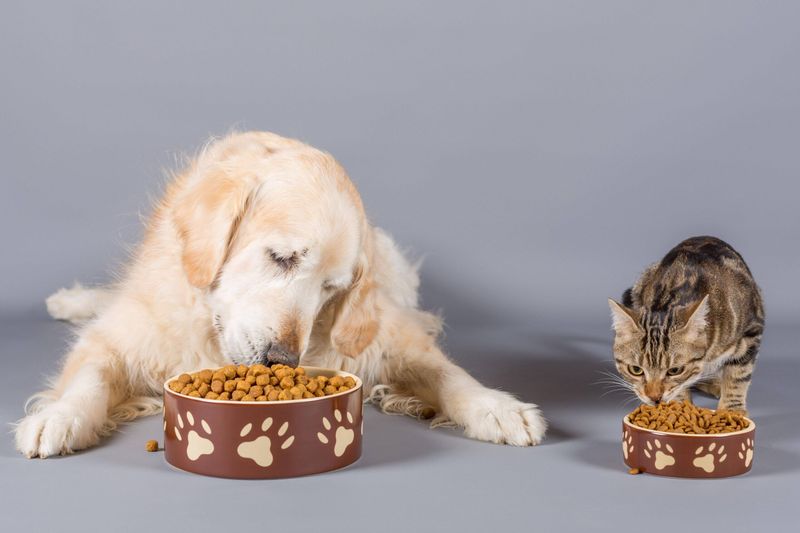
Mealtime can be a bonding opportunity. Feed the dog and cat at the same time but in separate areas initially.
Gradually bring their feeding spots closer as they grow accustomed to each other’s presence. This coordination can lead to a sense of companionship.
Ensure each pet has its own food and water bowls to prevent competition.
Discover strategies for coordinating pet feeding routines effectively online.
Clicker Training
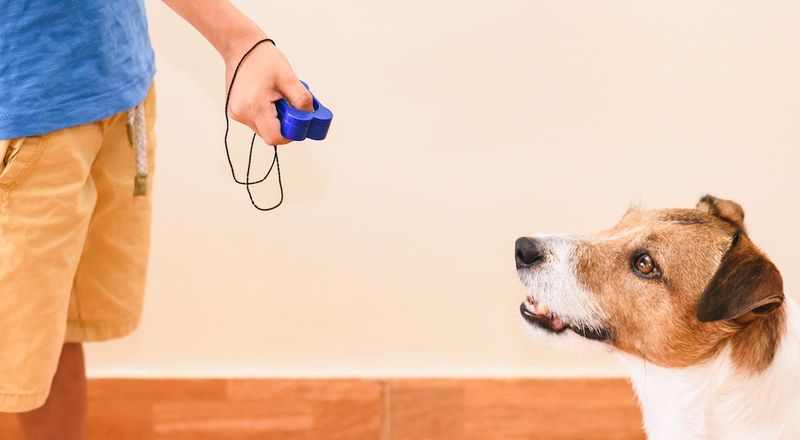
Clicker training is an effective technique for teaching desired behavior. Use a clicker to mark the exact moment a pet performs a favorable action.
Follow the click with a treat or praise to reinforce the behavior. This method is excellent for training both cats and dogs.
Consistency and patience are vital. With time, clicker training can lead to well-mannered interactions between your pets.
Learn more about using clicker training for pets with online resources.
Calming Music
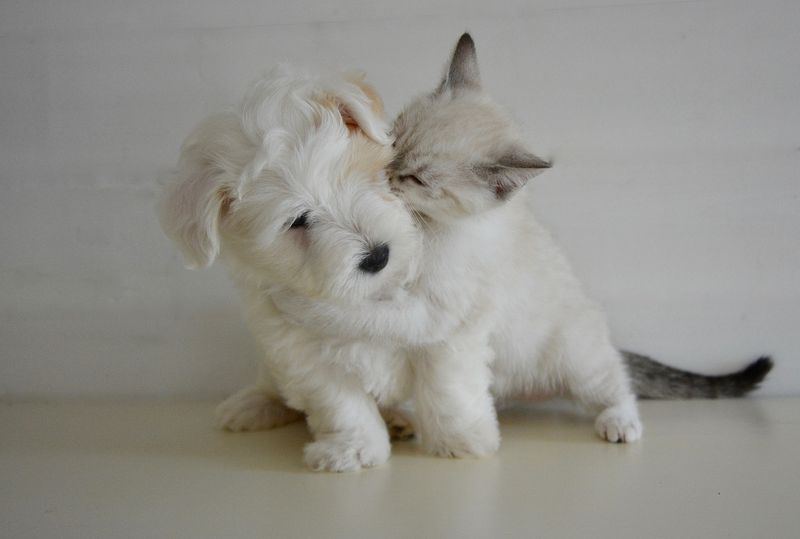
Music can soothe both pets, creating a relaxed atmosphere. Play calming tunes during their interactions.
This background music helps reduce anxiety and promotes a peaceful environment. Over time, it can become a cue for tranquility.
Experiment with different genres to find what best suits your pets.
Search for playlists specifically created to calm pets during interactions.
Routine Establishment
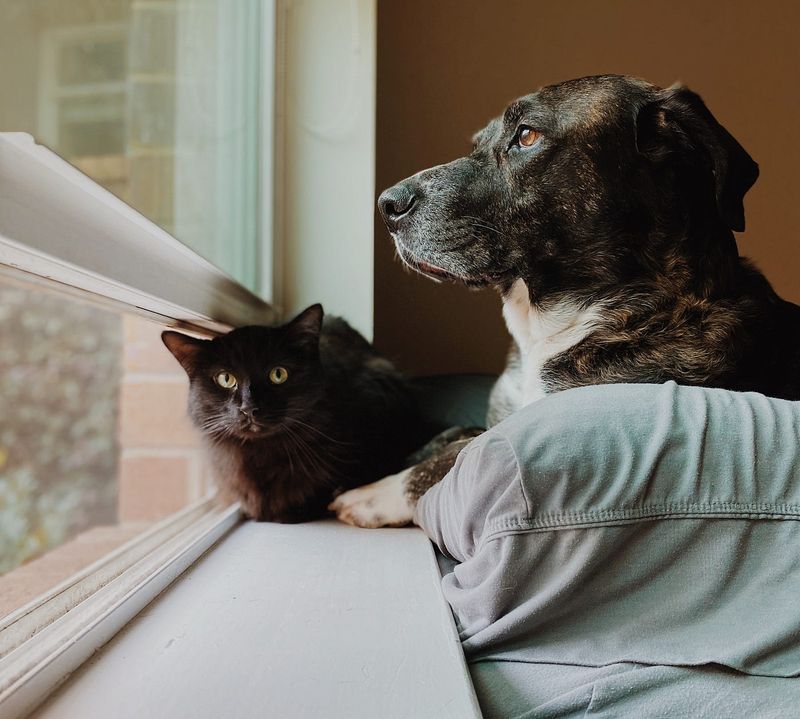
Consistency in routine fosters security. Establish regular schedules for feeding, play, and relaxation.
This predictability helps reduce anxiety, allowing both pets to anticipate and feel comfortable. Structure provides a stable environment.
With a routine, pets learn to coexist peacefully and harmoniously.
Explore how to create structured routines for pet harmony online.
Veterinary Consultation
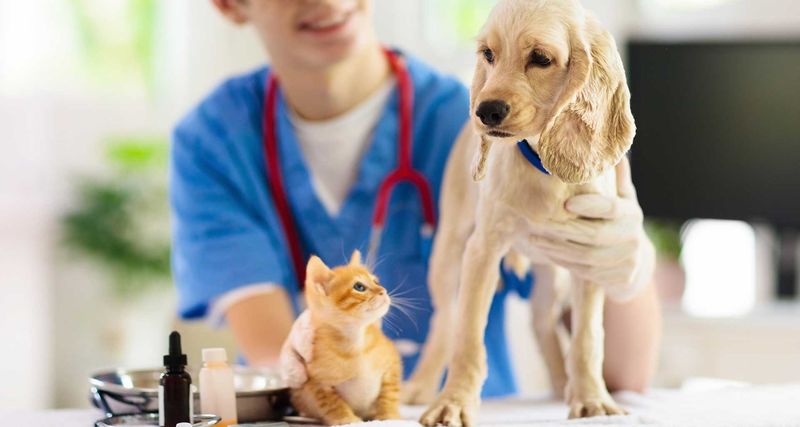
Consult a veterinarian if challenges arise. Professional guidance can address specific behavioral concerns and suggest tailored strategies.
Veterinarians have the expertise to evaluate health issues that might affect interaction. They can offer solutions tailored to your pets.
Regular check-ups ensure both pets remain healthy and happy, contributing to a peaceful coexistence.
Look up expert advice on fostering dog and cat relationships.

